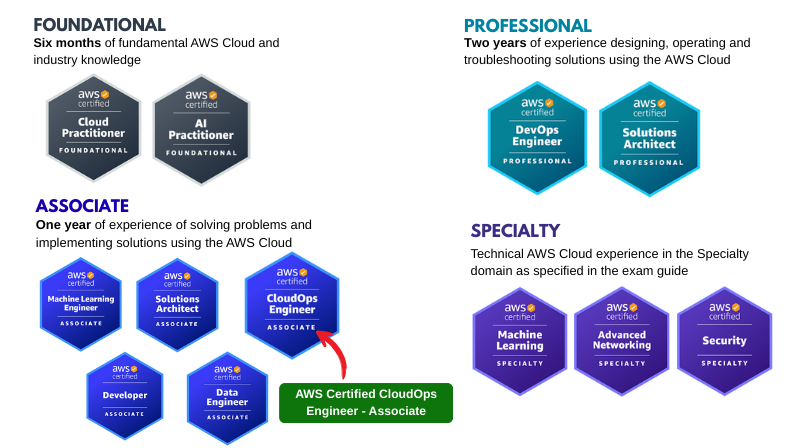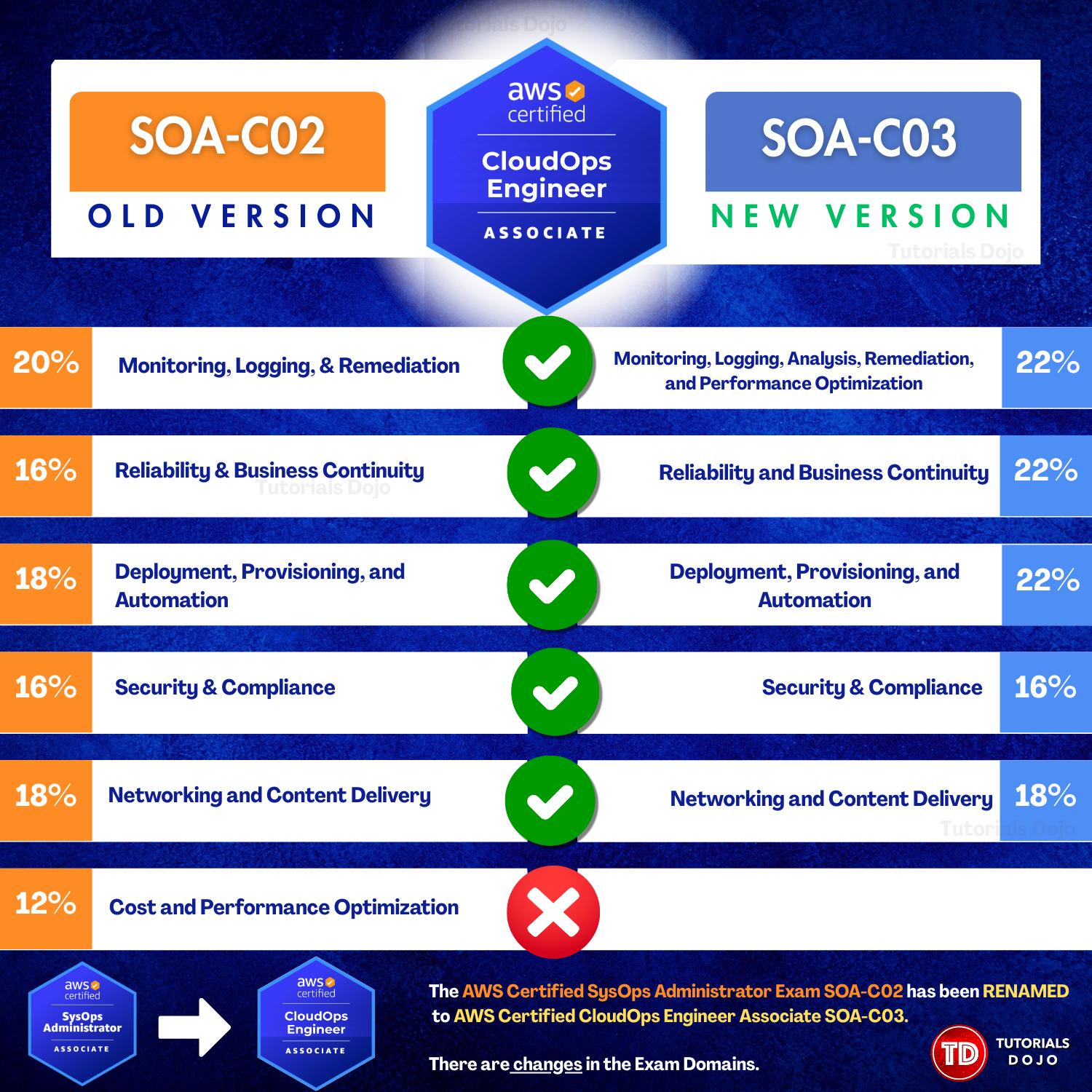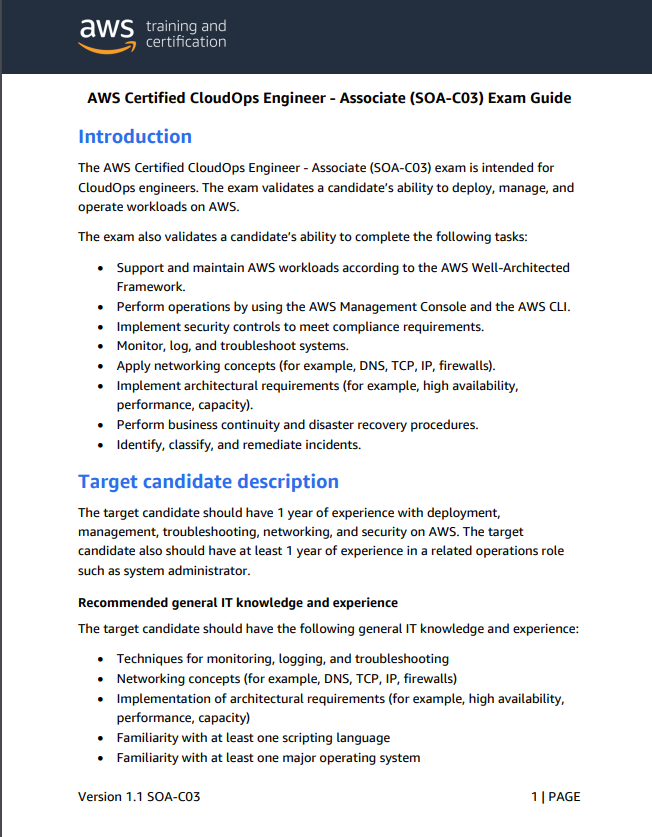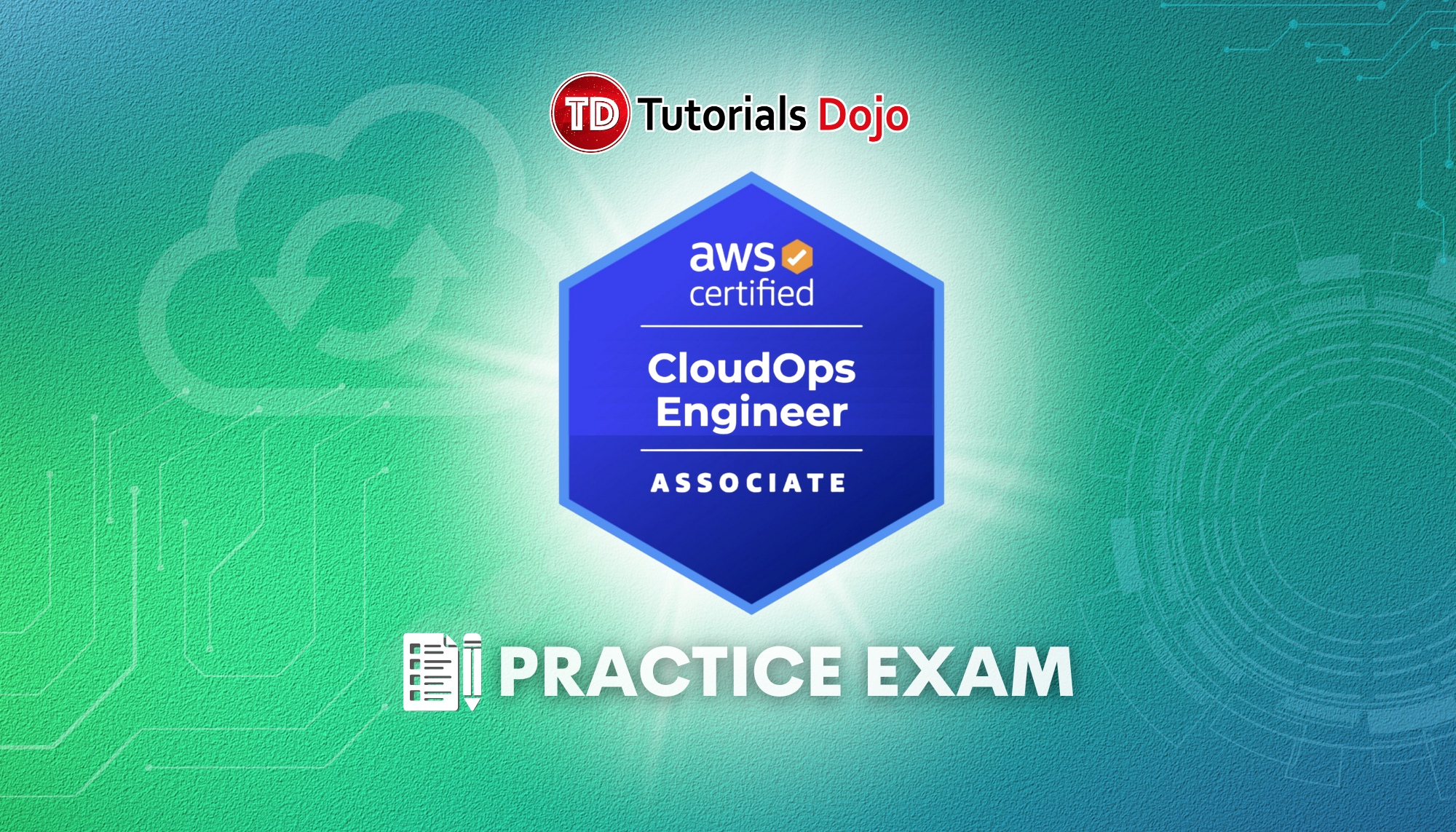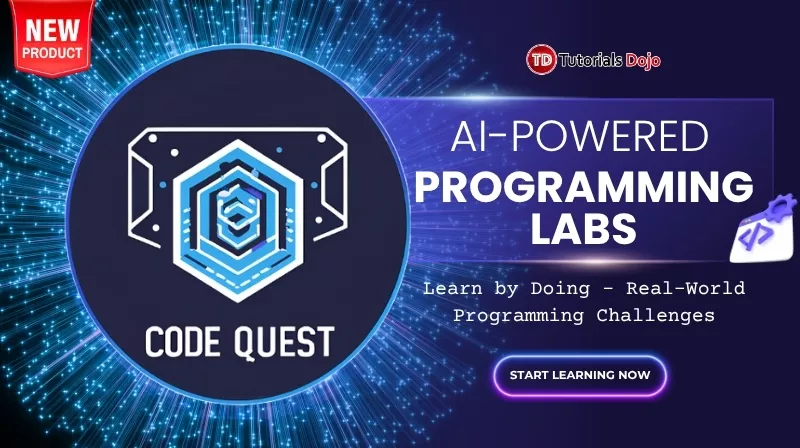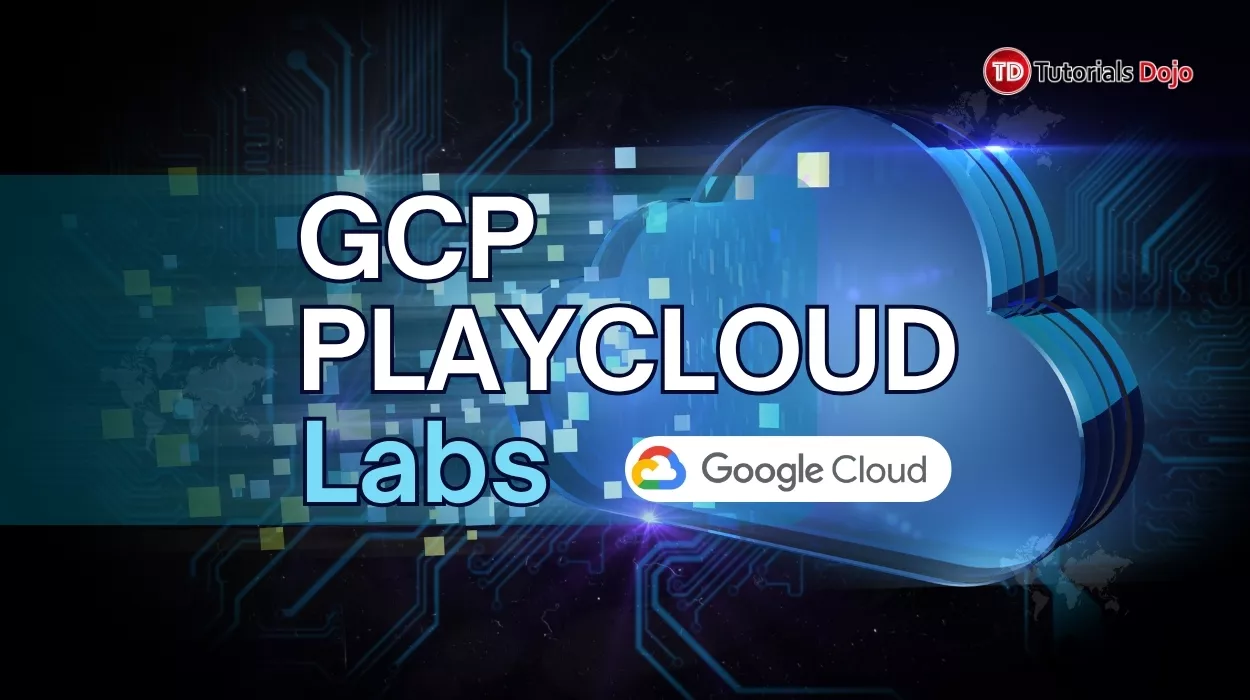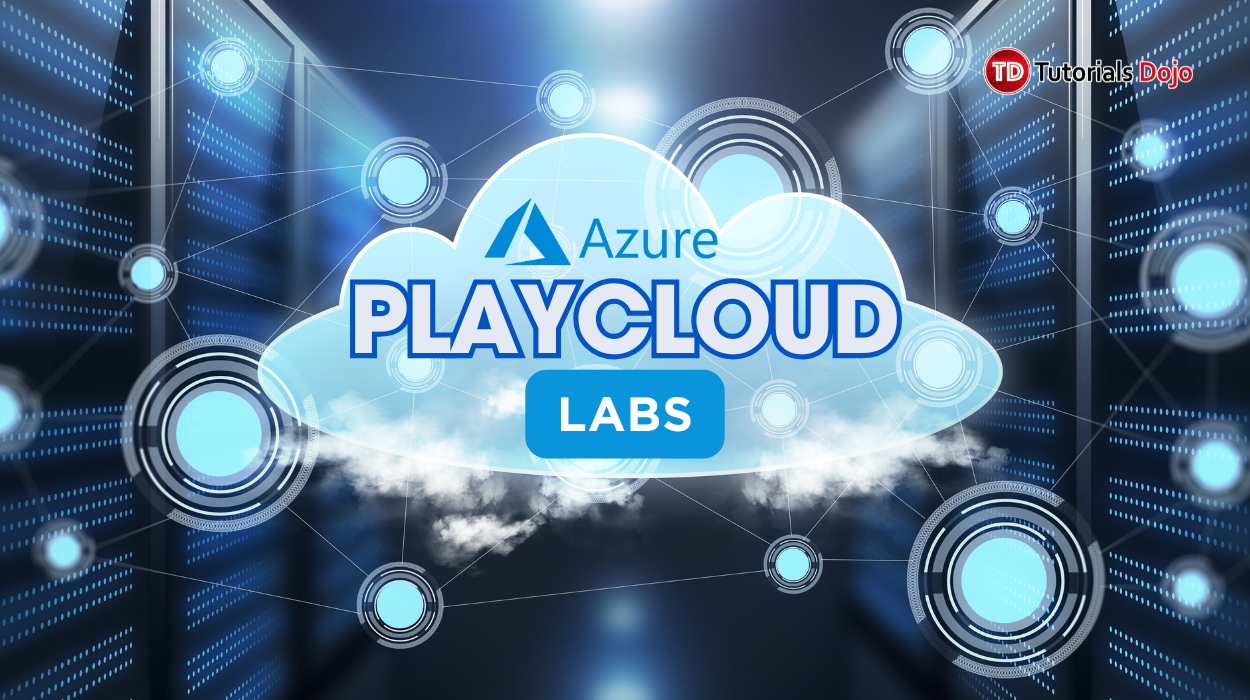Last updated on September 19, 2025
The AWS Certified CloudOps Engineer – Associate (SOA-C03), formerly the AWS Certified SysOps Administrator – Associate (SOA-C02), is a key certification for professionals focused on deploying, managing, and operating workloads on the AWS cloud. This certification validates your expertise in modern cloud operations, including automation, container services, multi-account and multi-Region environments, and infrastructure as code. It demonstrates your ability to maintain efficient, secure, and scalable AWS workloads in various organizational settings.
AWS Certified CloudOps Engineer – Associate Exam Overview
The AWS Certified CloudOps Engineer – Associate SOA-C03 exam is designed for individuals who perform cloud operations roles, including but not limited to Cloud Operations Specialists, Cloud Support Engineers, Cloud Consultants, and Migration Specialists. It is also suitable for IT professionals aiming to prove their skills in managing and optimizing AWS environments.
This exam covers essential operational knowledge aligned with best practices for AWS cloud environments, following principles similar to the AWS Well-Architected Framework for operations. It tests your ability to deploy, monitor, troubleshoot, and automate AWS workloads using services like CloudFormation, AWS monitoring tools, and container management solutions.
Key tasks validated by the SOA-C03 exam include:
-
Deploying and managing workloads on AWS in a secure, reliable, and scalable manner
-
Implementing automation and Infrastructure as Code using AWS tools and services
-
Monitoring and responding to operational events to maintain business continuity
-
Troubleshooting and resolving performance, availability, and security issues
-
Optimizing systems for cost-efficiency and operational excellence
To prepare for the exam, candidates should study the official AWS Exam Guide, AWS documentation, whitepapers, and gain hands-on experience with AWS operational tools and practices. Familiarity with scenarios involving security, networking, automation, cost optimization, troubleshooting, and container orchestration will be especially beneficial.
All of the relevant information for your upcoming SOA-C03 exam can be found on the Official Exam Guide for the AWS Certified CloudOps Engineer – Associate (SOA-C03) exam. The exam guide should be your reliable source of relevant information for your upcoming SOA-C03 certification test.
Difference between the SOA-C02 and SOA-C03 AWS Certified CloudOps Engineer Associate Exam Versions
Before you start preparing for the exam, it is essential to understand the key knowledge areas and topics of the new AWS Certified CloudOps Engineer – Associate SOA-C03 exam and the differences from the previous SOA-C02 version. Knowing these differences helps you focus your study plan on relevant and updated content according to the latest AWS cloud operations practices.
The exam domains of the SOA-C02 and SOA-C03 are similar in purpose but have been reorganized and updated to reflect modern cloud operations better. The SOA-C03 exam renames the certification to “CloudOps Engineer” to emphasize evolving industry roles from traditional systems administration (SysOps). The new SOA-C03 exam has consolidated some domains and introduced additional emphasis on automation, container services, and multi-account/multi-Region operations.
One of the main differences between the two exams is the inclusion of container technologies such as Amazon ECR and Amazon EKS in the SOA-C03 exam scope, which were out of scope in the SOA-C02 exam. Additionally, the SOA-C03 exam covers more infrastructure as code (IaC) concepts, including the usage of AWS CDK and third-party tools like Terraform and Git, reflecting the rise in cloud automation and deployment pipelines.
Another significant change is the updated percentage weighting of exam domains. The SOA-C03 exam places more focus on Monitoring, Logging, Analysis, Remediation, and Performance Optimization combined into a single domain with 22% , whereas the SOA-C02 exam separates them. The coverage percentage for Reliability and Business Continuity, and Deployment, Provisioning, and Automation has increased in SOA-C03, showing a stronger emphasis on these areas. Lastly, both exam versions retain the same percentage coverage in the Security and Compliance and Networking and Content Delivery domains.
The AWS Certified CloudOps Engineer Associate Study Materials
As a starting point for your AWS Certified CloudOps Engineer Associate SOA-C03 exam studies, exploring the free foundational AWS Cloud courses to build your cloud knowledge is recommended. For those new to AWS, beginning with the FREE AWS Certified Cloud Practitioner Essential digital course is a smart first step before diving into the SOA-C03 preparation.
Many resources are claiming to be the best for SOA-C03 exam preparation. However, some are outdated and don’t cover the latest updates introduced in the SOA-C03 exam. To ensure you use the right and most current study materials, always refer first to the official AWS Certification website.
The official AWS Certified CloudOps Engineer – Associate SOA-C03 page is your primary reference. Here you can find key materials like the official SOA-C03 Exam Guide and Sample Questions. This page also includes scheduling options and essential exam details.
To prepare effectively, consider the following collection of study materials for the SOA-C03 exam:
-
Official AWS Certified CloudOps Engineer – Associate SOA-C03 Exam Guide to understand the exam domains, objectives, and expectations.
-
AWS Skill Builder Exam Prep Plan which includes digital courses, labs, practice questions, and assessments specifically tailored to SOA-C03 exam domains.
-
Practice Exams and Mock Tests from reputable providers featuring updated questions covering container services, infrastructure as code, and multi-account architectures.
-
AWS Whitepapers and Documentation related to monitoring, business continuity, security, and advanced AWS services.
While many third-party resources exist, the official AWS materials remain the most authoritative and reliable source. Aligning your studies with these ensures coverage of all vital topics and helps build confidence to pass the SOA-C03 exam.
Ultimately, consistent study with official guides, practical hands-on experience, and targeted practice tests provide the best path to success for the AWS Certified CloudOps Engineer – Associate SOA-C03 certification.
AWS Certified CloudOps Engineer Associate SOA-C03 Exam Domains
The official AWS Certified CloudOps Engineer Associate SOA-C03 Exam Guide provides a list of exam domains, relevant topics, and services that you should focus on. There are 5 exam domains for the SOA-C03 certification test with corresponding exam coverage percentages as shown below:
- Domain 1: Monitoring, Logging, Analysis, Remediation, and Performance Optimization – 22%
- Domain 2: Reliability and Business Continuity – 22%
- Domain 3: Deployment, Provisioning, and Automation – 22%
- Domain 4: Security and Compliance – 16%
- Domain 5: Networking and Content Delivery – 18%
Compared to the previous SOA-C02 exam, SOA-C03 consolidates “Cost and Performance Optimization” into the broader monitoring and remediation domain, providing a more integrated approach. SOA-C03 introduces explicit coverage of container services, automation enhancements, and multi-account or multi-region operations, aligning the exam with evolving cloud operational best practices. This domain structure ensures that candidates are well-prepared to manage and optimize modern AWS environments efficiently and securely.
AWS Certified CloudOps Engineer Associate SOA-C03 Exam Topics
Analytics:
Application Integration:
- Amazon EventBridge
- Amazon Simple Notification Service (Amazon SNS)
- Amazon Simple Queue Service (Amazon SQS)
- AWS Step Functions
Business Applications:
Cloud Financial Management:
- AWS Cost and Usage Report
- AWS Cost Explorer
- Savings Plans
Compute:
- Amazon EC2
- Amazon EC2 Image Builder
- AWS Lambda
Containers:
- Amazon Elastic Container Registry (Amazon ECR)
- Amazon Elastic Container Service (Amazon ECS)
- Amazon Elastic Kubernetes Service (Amazon EKS)
Database:
- Amazon Aurora
- Amazon Aurora Serverless v2
- Amazon ElastiCache
- Amazon RDS
- Amazon DynamoDB
- Amazon DynamoDB Accelerator (DAX)
- Amazon RDS Proxy
Developer Tools:
Management and Governance:
- AWS CloudFormation
- AWS CloudTrail
- Amazon CloudWatch
- AWS Compute Optimizer
- AWS Config
- AWS Control Tower
- AWS Organizations
- AWS Service Catalog
- AWS Systems Manager
- AWS Trusted Advisor
- AWS Auto Scaling
- AWS Cloud Development Kit (AWS CDK)
- Amazon Managed Grafana
- AWS Managed Service for Prometheus
- AWS Resource Access Manager (AWS RAM)
- Service control policies (SCPs)
- Amazon VPC IP Address Manager (IPAM)
Migration and Transfer:
Networking and Content Delivery:
- AWS Client VPN
- Amazon CloudFront
- AWS Firewall Manager
- AWS Global Accelerator
- Amazon Route 53
- Amazon Route 53 Resolver
- AWS Transit Gateway
- Amazon VPC
- VPC Endpoints
- VPC Flow Logs
- VPC peering
- VPC Reachability Analyzer
- Amazon VPC Traffic Mirroring
- Amazon Application Recovery Controller
- Elastic IP addresses
- AWS Global Accelerator
- AWS PrivateLink
- Amazon Route 53
- Amazon Route 53 Resolver DNS Firewall
- AWS Site-to-Site VPN
- AWS Transit Gateway
Security, Identity, and Compliance:
- AWS Certificate Manager (ACM)
- Amazon Detective
- AWS Directory Service
- Amazon GuardDuty
- AWS IAM Access Analyzer
- AWS Identity and Access Management (IAM)
- Amazon Inspector
- AWS Key Management Service (AWS KMS)
- AWS License Manager
- AWS Secrets Manager
- AWS Security Hub
- AWS Shield
- AWS WAF
- Amazon EC2 security groups
- Egress-only internet gateways
- Elastic Load Balancing
- Internet gateways
- Amazon Macie
- AWS Network Firewall
- NAT gateways
- Network ACLs
Storage:
AWS Services to Focus On for the SOA-C03 Exam
AWS offers extensive documentation and well-written FAQs for all of its services. These two will be your primary source of information when studying. Furthermore, as an AWS CloudOps Engineer, you need to be well-versed in a number of AWS products and services since you will almost always be using them in your work. I recommend checking out Tutorials Dojo’s AWS Cheat Sheets which provide a summarized but highly informative set of notes and tips for your review of these services.
Core services to study:
- EC2 – As the most fundamental compute service offered by AWS, you should know about EC2 inside out.
- Elastic Load Balancer – Load balancing is very important for a highly available system. Study the different types of ELBs, and the features each of them supports.
- Auto Scaling – Study what services in AWS can be auto-scaled, what triggers scaling, and how auto scaling increases/decreases the number of instances.
- Elastic Block Store – As the primary storage solution of EC2, study the types of EBS volumes available. Also study how to secure, backup, and restore EBS volumes.
- S3 / Glacier – Study the S3 storage types and what differs between them. Also review the capabilities of S3 such as hosting a static website, securing access to objects using policies, lifecycle policies, etc. Learn as much about S3 as you can.
- VPC – Study every service that is used to create a VPC (subnets, route tables, internet gateways, nat gateways, VPN gateways, etc). Also, review the differences between network access control lists and security groups, and during which situations they are applied.
- Route 53 – Study the different types of records in Route 53. Also, study the different routing policies. Know what hosted zones and domains are.
- RDS – Know how each RDS database differs from one another, and how they are different from Aurora. Determine what makes Aurora unique, and when it should be preferred to other databases (in terms of function, speed, cost, etc). Learn about parameter groups, option groups, and subnet groups.
- DynamoDB – Consider how DynamoDB compares to RDS, Elasticache, and Redshift. This service is also commonly used for serverless applications along with Lambda.
- Elasticache – Familiarize yourself with Elasticache redis and its functions. Determine the areas/services where you can place a caching mechanism to improve data throughput, such as managing the session state of an ELB, optimizing RDS instances, etc.
- SQS – Gather info on why SQS is helpful in decoupling systems. Study how messages in the queues are being managed (standard queues, FIFO queues, dead letter queues). Know the differences between SQS, SNS, SES, and Amazon MQ.
- SNS – Study the function of SNS and what services can be integrated with it. Also, be familiar with the supported recipients of SNS notifications.
- IAM – Services such as IAM Users, Groups, Policies, and Roles are the most important to learn. Study how IAM integrates with other services and how it secures your application through different policies. Also, read on the best practices when using IAM.
- CloudWatch – Study how monitoring is done in AWS and what types of metrics are sent to CloudWatch. Also read upon CloudWatch Logs, CloudWatch Alarms, and the custom metrics made available with CloudWatch Agent.
- CloudTrail – Familiarize yourself with how CloudTrail works, and what kinds of logs it stores as compared to CloudWatch Logs.
- Config – Be familiar with the situations where AWS Config is useful.
- CloudFormation – Study how CloudFormation is used to automate infrastructure deployment. Learn the basic makeup of a CloudFormation template, stack, and stack set.
- KMS – Familiarize how KMS integrates with other services in storing encryption keys.
- Secrets Manager – Understand how Secrets Manager stores secrets and how you can use them with other AWS services.
- Parameter Store – Know when to use Parameter store and how compute services like EC2, ECS, and Lambda utilize it.
- DataSync – Familiarize which AWS services can be used to migrate data from an on-premises data center.
Some Additional Services We Recommend to Review for SOA-C03:
- Trusted Advisor
- Systems Manager
- CloudFront
- Cost and Billing Management Console
- OpsWorks
- Direct Connect
For the exam version (SOA-C03), you should also know the following services:
- Amazon FSx
- AWS Backup
- EC2 Image Builder
- S3 Transfer Acceleration
- AWS Global Accelerator
- RDS Proxy
- IAM Access Analyzer
Common Exam Scenarios for the AWS Certified CloudOps Engineer Associate (SOA-C03) Exam
|
Scenario |
Solution |
SOA-C03 Domain 1: Monitoring, Logging, Analysis, Remediation, and
|
|
|
You need to set up an alert that notifies the IT manager about EC2 instances service limits. |
Use Amazon EventBridge to detect and react to changes in the status of Trusted Advisor checks |
|
You need to track the deletion and rotation of CMKs. |
Use AWS CloudTrail to log AWS KMS API calls |
|
You need to investigate if the traffic is reaching the EC2 instance. |
Use VPC flow logs |
|
You need to ensure that the SSH protocol is always disabled on private servers. |
Use AWS Config Rules |
|
You need to retrieve the instance metadata of an EC2 instance. |
|
|
You have to monitor the CPU usage of a single process in your EC2 instance. |
Use the CloudWatch Agent procstat plugin to monitor system utilization. |
|
You need to generate a report on the replication and encryption status of all of the objects stored in the S3 bucket. |
Use S3 Inventory |
|
Metric to use to alarm when all instances behind an ALB becomes unhealthy |
AWS/ApplicationELB HealthyHostCount <= 0 |
|
Monitor restricted CIDR changes on a security group and remove them automatically. |
Use AWS Config to evaluate the security group and AWS Systems Manager Automation document to remove the unwanted CIDR range. |
|
Monitor CreateUser API call via email |
Utilize Amazon EventBridge, declare CloudTrail as a source, and CreateUser as an event pattern. Create an SNS topic and set it as an event target on Amazon EventBridge. |
|
You need to analyze the data hosted in Amazon S3 using standard SQL. |
Use Amazon Athena |
|
Improving the site speed of a static S3 web hosting with customers around the globe. |
Create a CloudFront web distribution and set Amazon S3 as the origin. |
|
You need to implement a solution to enforce the tagging of all instances that will be launched in the VPC. |
Use AWS Service Catalog TagOption library |
|
Resize an Amazon Elasticache for Redis cluster. |
Use online resizing for Amazon Elasticache Redis cluster. |
SOA-C03 Domain 2: Reliability and Business Continuity |
|
|
When the incoming message traffic increases, the EC2 instances fall behind and it takes too long to process the messages. |
Create an Auto Scaling group that can scale out based on the number of messages in the queue. |
|
You need to log the client’s IP address, latencies, request paths, and server responses that go through your Application Load Balancer. |
Enable access logging in ALB and store the logs on an S3 bucket. |
|
You need to determine which cipher is used for the SSL connection in your ELB. |
Enable Server Order Preference |
|
You need to monitor the total number of requests or connections in your load balancer. |
Monitor the SurgeQueueLength metric |
|
You need to ensure that the backups of an Amazon Redshift cluster are always available. |
Configure the Amazon Redshift cluster to automatically copy snapshots of a cluster to another region. |
|
Highly available File Server that supports SMB and manages file permissions using Windows Access Control List (ACL). |
Multi-AZ Amazon FSx for Windows File Server |
|
Slow load time when uploading objects to S3 |
S3 Transfer Acceleration |
|
PercentIOLimit metric hits 100% on EFS |
Create a new Max I/O performance mode EFS file system and migrate data to the new file system using AWS DataSync. |
|
Must ensure data integrity when performing EBS backups |
Build a Lambda function that uses CreateImage API to generate AMI of the EC2 instance and include a reboot parameter. Create an Amazon EventBridge rule to execute the Lambda function daily. |
SOA-C03 Domain 3: Deployment, Provisioning, and Automation |
|
|
You must remotely execute shell scripts and securely manage the configuration of EC2 instances. |
Use Systems Manager Run Command |
|
You need to identify the configuration changes in the CloudFormation resources. |
Use drift detection |
|
Requires a CloudFormation template that can be reused for multiple environments. If the template has been updated, all the stack that is referencing it will automatically use the updated configuration. |
Use Nested Stacks |
|
You need to automate the process of updating the CloudFomration templates to map to the latest AMI IDs. |
Use CloudFormation with Systems Manager Parameter Store |
|
The eviction count in Amazon ElastiCache for Memcached has exceeded its threshold. |
Scale the cluster by increasing the number of nodes. |
|
You need to provide each department with a new AWS account with governance guardrails and a defined baseline in place. |
Set up AWS Control Tower |
|
An S3 bucket must be configured to move objects older than 60 days to the Infrequent Access storage class. |
Set up a lifecycle policy |
|
You need to monitor all the COPY and UNLOAD traffic in the Redshift cluster. |
Enable Enhanced VPC routing on the Redshift cluster. |
|
A total of 500 TB of data needs to be transferred to Amazon S3 in the fastest way. |
Use multiple AWS Snowball devices. |
|
TLS certificate should be renewed automatically. |
Request a public certificate via AWS Certificate Manager (ACM) |
|
Get cost expenses of each AWS user account. |
Enable the createdBy tag in the Billing and Management console |
|
Provisioning instances on ASG takes time because of software dependencies installed via the UserData script. |
EC2 Image Builder |
|
Get cost expenses of each AWS user account. |
Enable the createdBy tag in the Billing and Management console |
SOA-C03 Domain 4: Security and Compliance |
|
|
You have to rotate an existing CMK with imported key material every 6 months |
Create a new CMK with imported key material and update the key ID to point to the new CMK |
|
A company needs to restrict access to the data in an S3 bucket. |
Use S3 ACL and bucket policy |
|
Mitigate malicious attacks such as SQL injection and DDoS attacks from unknown origins. |
Use AWS WAF and Shield |
|
You need to define an IAM policy to enable the user to pass a role to an AWS service. |
Define iam:PassRole in the IAM policy |
|
You need to create a solution that allows multiple EC2 instances in a private subnet to use AWS KMS and the traffic must not pass through the public Internet. |
Configure a VPC endpoint |
|
You need to encrypt all the objects at rest in your S3 bucket. |
Use SS3-S3, SSE-KMS or SSE-C |
|
Enable authentication to AWS services using Active Directory Federation Services. |
Amazon Cognito user pool |
|
Create a bucket policy to only allow AWS accounts in the organization to access an S3 bucket. |
Set principal to (*) and create a condition for PrincipalOrgId |
|
Read, update, delete messages from SQS queues from an instance. |
Create a policy with |
|
RDS credentials should not be hardcoded on Lambda functions. |
Use Secrets Manager to store credentials. |
SOA-C03 Domain 5: Networking and Content Delivery |
|
|
You need to allow the EC2 instances in your VPC that support IPv6 to connect to the Internet but block any incoming connection. |
Set up an egress-only Internet gateway |
|
You have to establish a dedicated connection between their on-premises network and their Amazon VPC. |
Set up a Direct Connect connection |
|
You need to increase the cache hit ratio for a CloudFront web distribution. |
Add a Cache-Control max-age and increase the TTL by specifying the longest value for max-age |
|
You need to ensure that users are consistently directed to the AWS region nearest to them. |
Set up a Route 53 Geoproximity routing policy |
|
A company plans to implement a hybrid cloud architecture. You need to allow your resources on AWS the connectivity to external networks. |
Assign an Internet Gateway to the VPC |
|
Users being served desktop version on mobile phones. |
Add a User-Agent header to the list of origin custom header on CloudFront. |
|
DNS record at the apex domain. |
ALIAS record |
Validate Your SOA-C03 Knowledge
Once you have finished your review and you are more than confident in your knowledge, test yourself with some practice exams available online. AWS offers a practice exam that you can try out at their AWS SkillBuilder portal. Tutorials Dojo also offers a top-notch set of AWS Certified CloudOps Engineer Associate practice tests. Each test contains unique questions that will surely help verify if you have missed out on anything important that might appear on your exam. You can also pair our practice exams with our AWS Certified CloudOps Engineer Associate Exam Study Guide eBook to further help in your exam preparations.
Sample Practice Questions For SOA-C03 Exam:
Question 1
A financial start-up has recently adopted a hybrid cloud infrastructure with AWS Cloud. They are planning to migrate their online payments system that supports an IPv6 address and uses an Oracle database in a RAC configuration. As the AWS Consultant, you have to make sure that the application can initiate outgoing traffic to the Internet but blocks any incoming connection from the Internet.
Which of the following options would you do to properly migrate the application to AWS?
- Migrate the Oracle database to an EC2 instance. Launch an EC2 instance to host the application and then set up a NAT Instance.
- Migrate the Oracle database to RDS. Launch an EC2 instance to host the application and then set up a NAT gateway instead of a NAT instance for better availability and higher bandwidth.
- Migrate the Oracle database to RDS. Launch the application on a separate EC2 instance and then set up a NAT Instance.
- Migrate the Oracle database to an EC2 instance. Launch the application on a separate EC2 instance and then set up an egress-only Internet gateway.
Question 2
A leading tech consultancy firm has an AWS Virtual Private Cloud (VPC) with one public subnet. They have recently deployed a new blockchain application to an EC2 instance. After a month, management has decided that the application should be modified to also support IPv6 addresses.
Which of the following should you do to satisfy the requirement?
Option 1:
-
Associate an IPv6 Gateway with your VPC and Subnets
-
Update the Route Tables and Security Group Rules
-
Enable Enhanced Networking in your EC2 instance
-
Assign IPv6 Addresses to the EC2 Instance
Option 2:
-
Attach an Egress-Only Internet Gateway to the VPC and Subnets
-
Update the Route Tables
-
Update the Security Group Rules
-
Assign IPv6 Addresses to the EC2 instance
Option 3:
-
Associate an IPv6 CIDR Block with the VPC and Subnets
-
Update the Route Tables
-
Update the Security Group Rules
-
Assign IPv6 Addresses to the EC2 Instance
Option 4:
-
Enable Enhanced Networking in your EC2 instance
-
Update the Route Tables
-
Update the Security Group Rules
-
Assign IPv6 Addresses to the EC2 Instance
Click here for more AWS Certified SysOps Administrator Associate practice exam questions.
Check out our other AWS practice test courses here:

